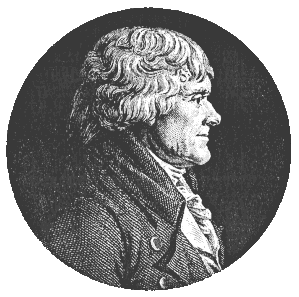Physionotrace
Today, realism in art leads to something called the physionotrace. The University of Houston's College of Engineering presents this series about the machines that make our civilization run, and the people whose ingenuity created them.
What do you expect from a picture? Turn that question in the light, and it gets complicated. Medieval pictures were often taken from standard sets of images. The same face might be called St. Peter in one manuscript and Socrates in another.
A cartoon of Bill Clinton today is equally far from reality, but it's recognizable because of systematic exaggeration. An 18th-century portrait was quite realistic by comparison, although artists weren't above smoothing over human imperfections.
What we expected from a picture shifted dramatically around 1500. When we started illustrating the new printed books, we could show the same picture to far more people. Suddenly we had good reason for creating realism in art.
Leonardo da Vinci had little to do with print, but his whole life revolved around realism. Leonardo used every means he could muster to expose external realities. He built camera obscuras and transparent screens to help capture what the eye saw.
Then Albrecht Dürer took up mechanical means for making pictures. He used them to create a new respect for realism in art, and he wrote a book on those methods. When artists saw that any technician could reproduce the world literally, it seemed clear that realism should become a part of their artistic vision.
After Leonardo and Dürer, a great parade of perspective instruments, pantographs, and universal drawing devices marched down through the 16th, 17th, and 18th centuries. Yet art didn't lose its soul in the process. A lot of that mathematically inspired art is glorious to see, even if it remained rooted in a world of palpable reality for 300 years.
A portrait of Thomas Jefferson drives the point home. It's a compelling, slightly arrogant, immensely intelligent face -- all the things you'd expect Jefferson to be. But it was made with the help of an instrument called a physionotrace.
A physionotrace was a contraption in which you mounted your subject. You created the image by tracing him with an eyepiece connected to a pantograph. It sounded very scientific. It touched the rational, 18th-century, Jeffersonian mind. This mechanical Jefferson -- this wholly realistic Jefferson -- is more like a neighbor or colleague than the patrician face you see on a nickel.
Then, the same year Jefferson died, a French inventor made the first photograph. It was an eight-hour exposure of Paris housetops. After that, realism became the work of cameramen.
And our expectations underwent another huge change. Art swiftly returned to the business of recording not just what the eye saw, but what the mind had built.
I'm John Lienhard, at the University of Houston, where we're interested in the way inventive minds work.
(Theme music)
Kemp, M., The Science of Art. New Haven: Yale University Press, 1990. See especially Chapter IV, Machines and Marvels.
Dürer, A., Underweysung der Messung, mit dem Zirckel un Richtscheyt. [Nuremberg]: 1525. (First edition available in Special Collections, UH Library)
I am grateful to Margaret Culbertson, UH Art and Architecture Library, for suggesting the physionotrace as a subject.

Clipart
![Early mechanical creation of an image by Albrecht Dürer (from Underweysung der Messung, mit dem Zirckel un Richtscheyt [Nuremberg]: 1525)](/sites/engines/files/images/page/durer1.gif)
Image Courtesy of Special Collections, UH Library
Early mechanical creation of an image by Albrecht Dürer (from Underweysung der Messung, mit dem Zirckel un Richtscheyt [Nuremberg]: 1525)